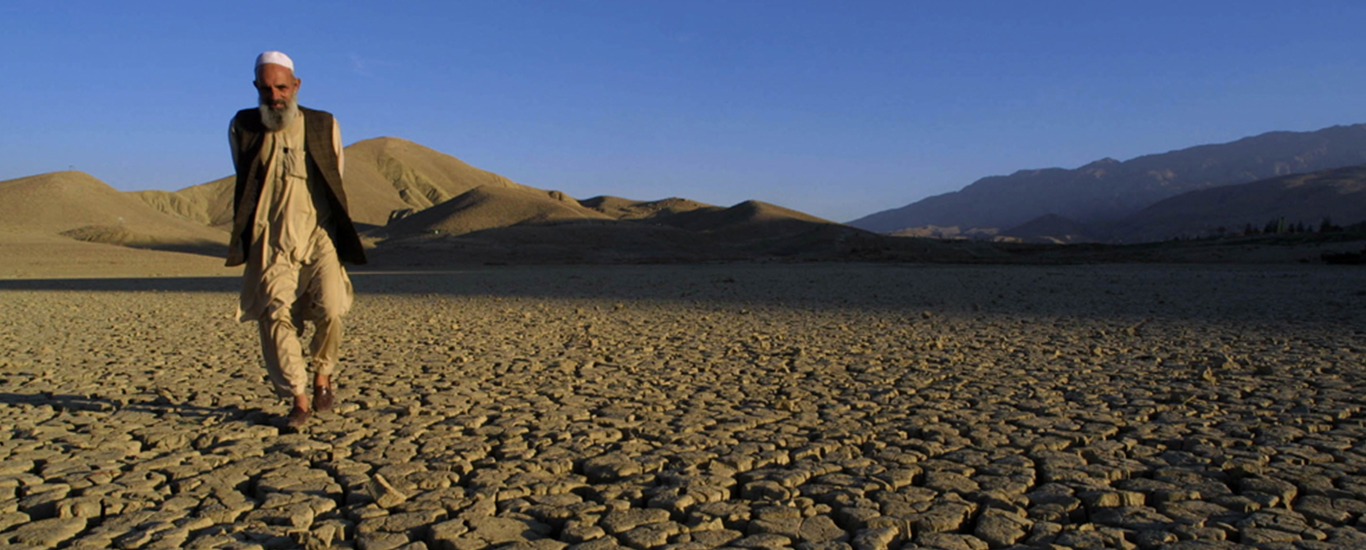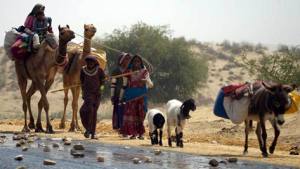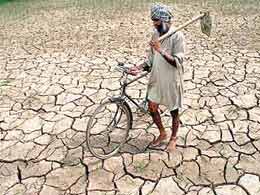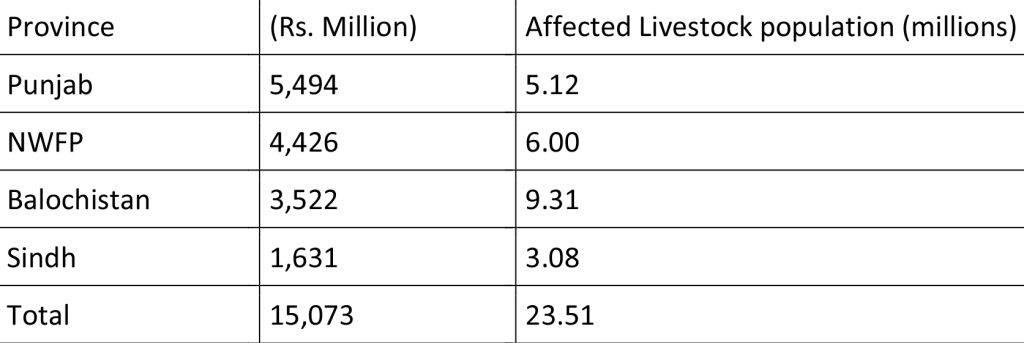
Hafiz Muhammad Usman Siddiq and Waleed Akram
College of Veterinary and Animal Sciences, Jhang Sub-campus UVAS LAHORE
Drought is a condition which occurs as a result of abnormal weather conditions for a prolonged period of time. Due to lack of rain, soil become deficient of available water resources. Drought badly affects our livestock as well as agriculture. All provinces of Pakistan are suffering from water shortage. Nowadays, there are chances that these drought conditions will become even worse in the near future.
The incidence of drought in Pakistan is becoming increasingly greater due to low rainfall and extreme variations in temperature. Canals are continuously drying up with the passage of time. Water from the rivers is not sufficient to overcome this problem. It has caused huge loss to life of humans as well as livestock including cattle, sheep, goat, buffaloes, horses, donkeys, camels and poultry. Pakistan is an agricultural country whose economy is strongly based on agriculture as well as the livestock sector. Being a veterinarian or agrarian, it is our responsibility to highlight this issue in Pakistan.
T he experts of meteorology have a view that major changes have occurred in the global weather are due to the EI –Nino and La –Nina phenomena. These phenomenal changes in the weather have taken place due to both the factors during the last three to four years. The effects of both the factors have changed the ecology pattern and density of rain. Both these factors bring undesirable changes in the global climate of the world.
he experts of meteorology have a view that major changes have occurred in the global weather are due to the EI –Nino and La –Nina phenomena. These phenomenal changes in the weather have taken place due to both the factors during the last three to four years. The effects of both the factors have changed the ecology pattern and density of rain. Both these factors bring undesirable changes in the global climate of the world.
There are many federal as well as provincial departments which are directly or indirectly monitoring these climatic changes in Pakistan, such as the Pakistan meteorological department (PMD), National Drought Monitoring Center, WAPDA, Ministry of Climate Change, ministry of food research. P&D, Food, Health, Livestock, Forest, Agriculture, Irrigation, PDMA, Provincial Nutrition Cell. The changes are also monitored by United Nations (U.N) agencies like WFP, UNICEF, FAO, WHO, UNDP.
Livestock sector is playing a major role for the uplift of rural economy by contributing 11.8% in national GDP and 55.5% in the agriculture sector’s share of GDP. It is considered a source of employment generation in rural areas, helping reduce variation in income. It is central to the livelihood of the rural poor and can play an important role in poverty alleviation. The Government believes that increase in livestock production can have a strong impact on the incomes of the rural poor. Productivity increase in livestock and dairy can have significant positive impact on total income in the sector as well as exports. There is substantial scope in increasing the export of high-value livestock and dairy value-added products. Sustainable Livestock Sector Development and its contribution in food and nutritional security, economic stability will help people of Pakistan to improve their livelihood in future.
Regions of Pakistan of which are more prone to drought are the Thar desert, Kirthar range in Sindh, rangelands of Balochistan, western Balochistan Desert, Cholistan Desert, Thal Desert. The major issues in these areas are overgrazing, water management, desertification, barani agriculture, poor services, and weak environmental management.
The long duration of drought in parts of Pakistan has affected livestock and badly affected fruit and rainfed cereal production in Punjab and Balochistan. According to a recent report issued by FAO and the World Food Programme (WFP), the hardest hit regions are Balochistan, and parts of Sindh and Punjab provinces. Fruit farmers in parts of Balochistan province face financial ruin as large numbers of fruit trees have dried up and the rest have been rendered unproductive by severe water shortages.
Rain-fed wheat production is about 70 percent below the average of the previous five years and 62 percent below last year’s reduced crop. Tota l wheat production, at about 18.7 million tonnes, is down 11 percent from the 2000 total. Rice production is forecast at 3.9 million tonnes, about 24 percent below last year. The livestock sector plays an extremely important role in the country’s economy, providing the main source of household income for many people in the country. In addition, animals play a crucial role in household food security, providing essential nutritional needs through meat and milk, particularly in remote pastoral areas with little or no access to alternative food sources.
l wheat production, at about 18.7 million tonnes, is down 11 percent from the 2000 total. Rice production is forecast at 3.9 million tonnes, about 24 percent below last year. The livestock sector plays an extremely important role in the country’s economy, providing the main source of household income for many people in the country. In addition, animals play a crucial role in household food security, providing essential nutritional needs through meat and milk, particularly in remote pastoral areas with little or no access to alternative food sources.
Livestock sector has affected very adversely by the drought. According to different sources, the losses to this sector are worth almost Rs. 15 billion. Out of this amount, Punjab suffered a loss of Rs. 5.5 billion, KPK Rs. 4.4 billion. Balochistan Rs. 3.5 billion and Sindh Rs. 1.63 billion. Pakistan could face severe drought in the near future according to experts in the country, who have warned the country will approach the “absolute scarcity” level of water by 2025, reported by Independent. The Pakistan Council of Research in Water Resources (PCRWR) made the grim forecast in a new report which claimed the country touched the “water stress line” in 1990 before crossing the “water scarcity line” in 2005.
An unnamed government official in the south Asian country told Pakistani media that urgent research is needed to find a solution but he also warned of a lack of available government funds. Pakistan has the world’s fourth highest rate of water use but is dependent on water from a single source – the Indus River basin in India – and rainfall has been steadily declining, with some experts claiming this is down to climate change. An estimated 23 million people live in Pakistan’s largest city, Karachi – but very few have running water after the land has gradually dried up, forcing many residents to queue for hours for supplies to be given to them.
Province-wise situation of losses in the livestock sector is as follows:

We should quickly find the solution of drought in near future so that we can save our livestock as well as agriculture sector which are playing a major role in the economy of Pakistan. It is very necessary to establish a separate ministry at federal level to tackle harmful drought conditions. Stakeholders of the country should actively involve to make policies and take better decision regarding livestock mobilization. Drought forecasting and management department must be established at national and provincial level to monitor drought issues and also consider pre-drought planning, during drought action plans and post-drought management. Installation and the rehabilitation of water facilities for the improvement of rangelands, extension of veterinary facilities, production of livestock feed, distribution of crop seed and soft loans to farmers are very important.




